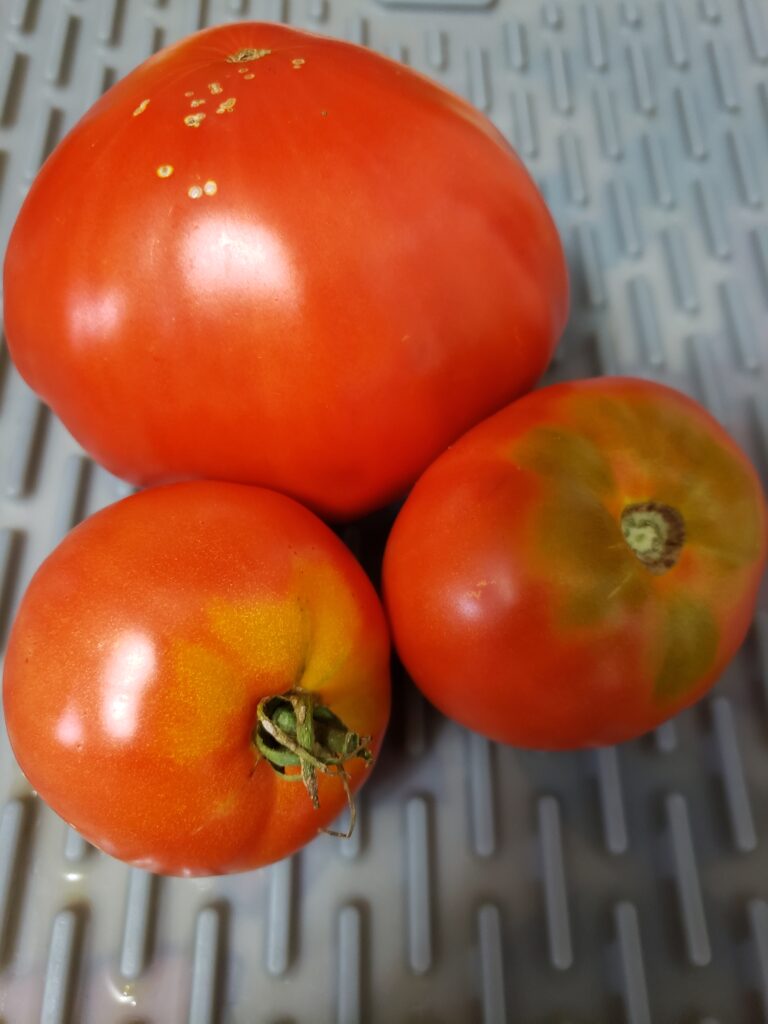Fall is the best time to make compost.
How to grow healthy tomatoes?

Organic farming products have long been a priority in the diet of people who value their health. But few people know that tomatoes with the precious label “organic” can be inexpensively grown on your own plot of land. Many may object claiming that it will not be possible to stick a seedling into the ground and collect healthy and tasty fruits from it. And they will be right. For tomatoes to grow, organic fertilizers are needed.
In Ohio, for example, the upper fertile soil layer is heavy, clayey. Little air and moisture reaches the roots, which is why the yield of bushes, and the appearance of fruits leave much to be desired. Sick spotted fruits are not only unsightly, their nutritional value is also reduced. They are less tasty, spoil quickly and do not contain the full list of nutrients that healthy ones do. You get much less benefit and pleasure from tomato bushes if you do not apply the right fertilizers.
Compost is rightfully considered one of the best fertilizers for organic farming. Fortunately, you can accumulate a lot of organic matter over the summer. We mow the grass regularly. We collect plant debris and pull out weeds. Even vegetable peelings are good. Some keen compost makers even add paper.
Autumn is the best time to make compost. The method is effective even at low temperatures, since decomposition processes are accompanied by the release of heat. But elevated temperatures can stop the process. In autumn and winter, it is easier to maintain an even positive temperature inside the compost heap.
Engaging in stump grinding, we have plenty chips and sawdust, so I can share my recipe for compost from wood sawdust.
This compost is good in a greenhouse. It perfectly maintains temperature and humidity, leaving the soil loose. In such soil, worms multiply quickly, and living microorganisms protect plants from diseases.

Sawdust from fruit trees and acacia are considered the most useful and rich in microelements. From one medium-sized stump, you can collect about one cubic yard of chips mixed with soil. And this is very good, since the soil already contains microorganisms that decompose wood. We only need to speed up the process. If this is not done, the compost will mature for too long, 2-3 years, and we want to use it for spring planting. To do this, place the sawdust in a box with an impermeable bottom. This is necessary to prevent the leakage of microelements into the soil. It is important for us to preserve them in the compost and add them to cultivated plants.
Moisture is required for the reproduction of bacteria. Therefore, we water the sawdust with water with the addition of urea. Do not be afraid of urea. This is a completely organic substance present in the natural processes of decomposition of organic matter. We only increase its concentration. Urea accelerates decomposition and helps maintain a high enough temperature inside the heap so that our beneficial bacteria do not freeze in winter and work actively.
You can add any plant organic matter to this mixture: mown grass, fallen leaves and fruits. Do not be afraid to infect the compost with fungi and pathogenic bacteria. They will not survive during the compost maturation process. Compost is safe for the garden. Moreover, microorganisms mature in the compost heap that will protect your plantings from diseases. And you will get a healthy, beautiful and tasty harvest.
Do you use compost in agriculture? Do you have a favorite recipe? Please share.
Have wonderful harvests!

Manager
0
Tags :

Apply for a free estimate
Contacts
Ohio.
| Phone: | (216) 767 - 6323 |
| Fax: | (216) 767 - 6323 |
| office@juststumpit.com | |
Useful Links
What we do.
Our Blog
Translate »
